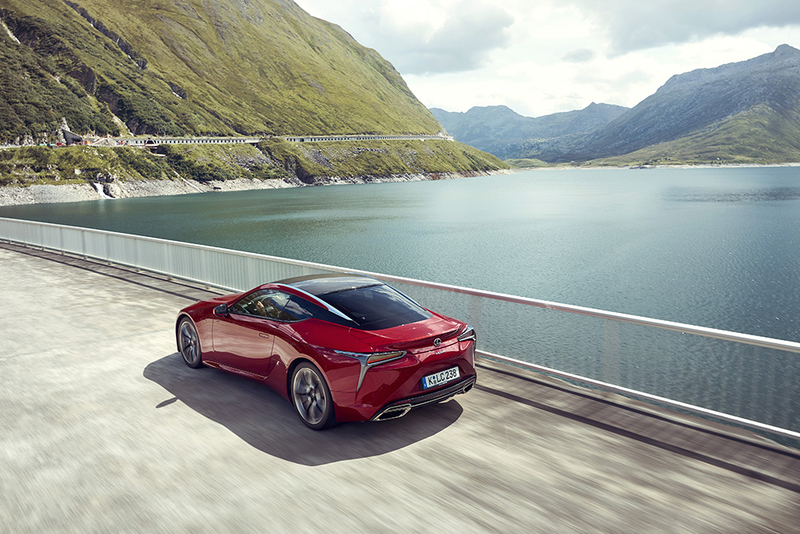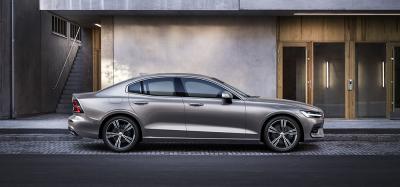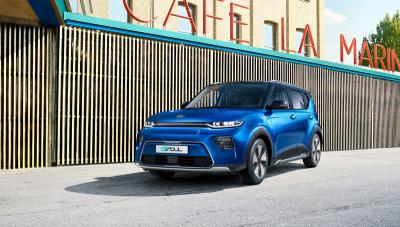Stylish yet not presumptuous. Although there is little doubt about the fact that this is a sports car, to be driven with a heavy foot or with a velvet touch depending on the situation, the LC is a true GT in a 2+2 configuration. A design that unequivocally recalls the looks introduced by the Lexus LFA, the Japanese 650 HP V10 hyper-car, designed by Leonardo Fioravanti and produced as a limited series until 2012.
This tamer version provides for two additional rear passengers, albeit somewhat sacrificed as one would expect in an authentic coupe. The 2021 version of the LC boasts several new aesthetic features and technological refinements, designed to improve the power output of the engines and reduce weights and masses.

The Lexus LC inherited most of its stylistic traits from the famous LFA, integrating a 2+2 layout and an open-top convertible solution
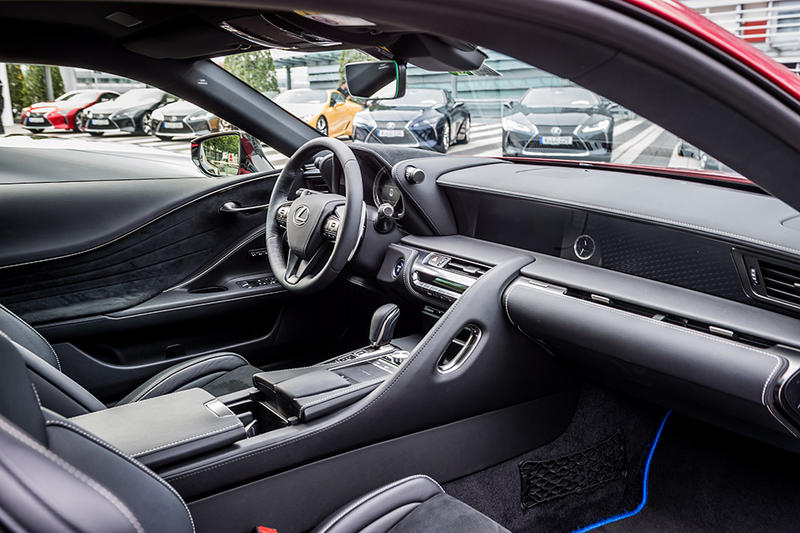
The cabin is finely upholstered in leather and alcantara and provides accommodation for two additional passengers, although the coupe configuration does not reserve much space in the rear not to mention the luggage compartment
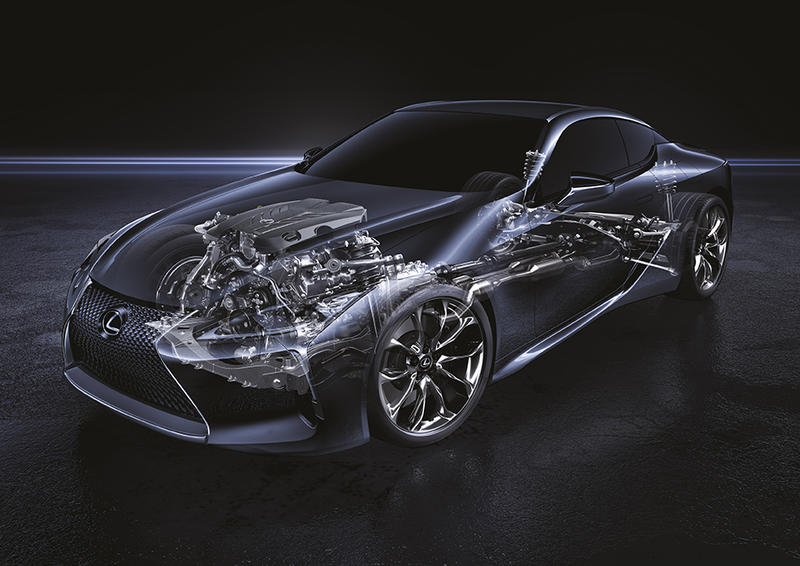
Two powerful engines guarantee all the performance needed, with an overall output of 359HP on the 3.5 V6 hybrid and 477HP on the 5-litre V8
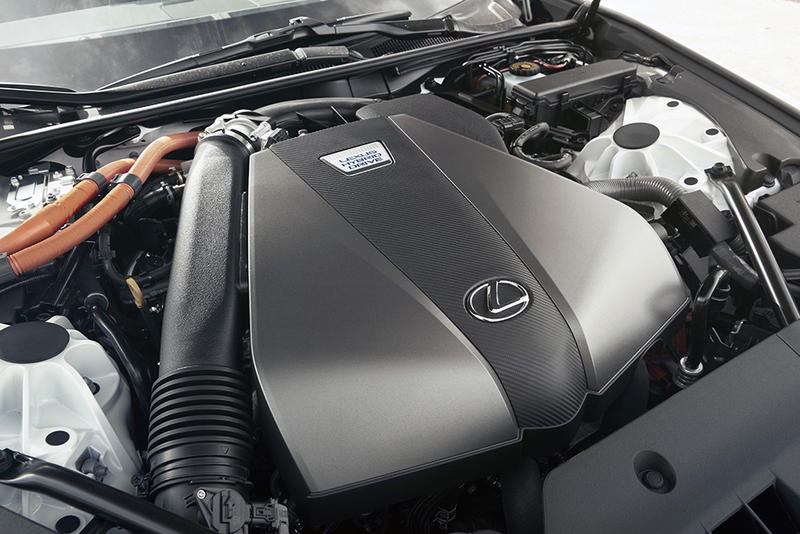
-
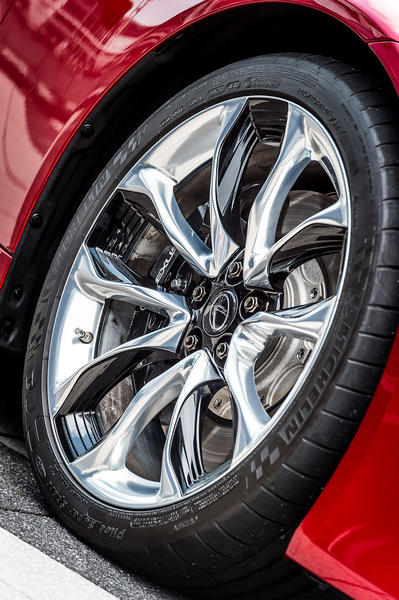
Equipped exclusively with run-flat tires, the LC is the first Lexus to offer 21-inch forged alloy wheels on the Sport + version
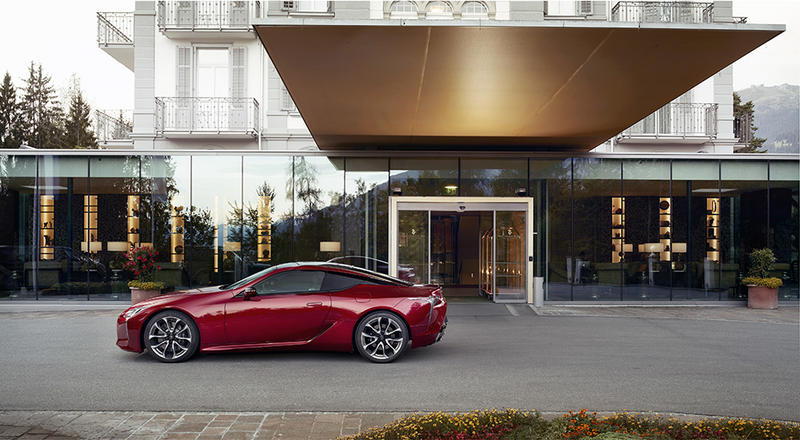
-
Japanese Omotenashi
Faithful to the mission of Toyota’s premium brand, the care taken by Lexus in creating the LC is an evident demonstration of the company’s typical philosophy of maximum attention to hospitality towards the guest (or customer), Omotenashi in Japanese. Which, in this case, means honed interiors, quality materials as shown by details such as the gear knob in hand-stitched leather, or the exclusive forged 21-inch wheels, the first car in the brand to offer them as standard.
Its 4.77 metres in length and 1.92 metres in width enclose a distinctly sporty design, highlighted by a height of just 1.34 metres, a generous 2.87m wheelbase and reduced overhangs (930 and 970 mm respectively) both front and rear. The penetrating and streamlined design is made possible by cutting-edge solutions, such as the ultra-thin triple-LED light clusters at the front, as well as a very compact suspension geometry at the rear.
The roof, made of composite materials to reduce weight - which is still significant and ranges between 1.9 and 2 tons depending on the version - follows the design of the vehicle narrowing at the sides to underline the “hourglass” shape of the body, conveying a “muscular” look to the overall design. The convertible version, the first Lexus soft-top ever, has a multilayer roof that can be folded electrically in just 15 seconds, positioned between the rear suspensions so as not to affect the already small capacity of the boot. Enlarged wheel arches, capable of housing 20 and 21 inch wheels, spoilers and stylish intakes can be further customized with optional Sport and Sport+ kits which include carbon fibre parts and an automatically-lifting rear wing.
The aerodynamic solutions, designed to maximize downforce, have taken into account details such as the air ducts in the wheel arches, a flat floor and the slender stabilisers placed near the front pillars. A dynamic style that can also be found in the passenger compartment with taut lines and horizontal development of the instruments across the entire width of the dashboard, where the only analogue element is the elegant circular clock. The entire complex of controls and instruments are dominated by electronics, with a large TFT (Thin Film Transistor) panel and touchscreen from which every on board function can be easily managed, from navigation to infotainment, assisted by a selector located on the central tunnel.
Once seated, the wraparound seats are comfy and tight, ergonomically shaped with optional sports equipment. Facing the driver, a multi-function steering wheel with paddle shifters that prove rather functional on both the CVT transmission version (simulating up to 10 gears) and the 10-speed sequential automatic gearbox. The interior volumes allow for adequate space for the passengers' legs, while the rear boot is useful for a maximum load of 172 litres. Consistent with the type of vehicle, both the spare wheel and repair kit are missing, given the adoption of self-supporting run-flat tires that allows the vehicle to run even with a puncture.
With or without batteries
Exuberant at times or tame and easily manageable in everyday driving, both engines stand out for their wide-ranging output. Starting with the electrified version, the LC hybrid, which benefits from a powertrain made up of a 299hp 3,456 cc V6 engine, flanked by a 650 Volt electric unit with 179hp, which translates into a combined total of 359hp. The immediate and prompt action of the electric motor, managed by a Multi Stage Hybrid system, together with the powerful contribution of the ICE unit with Dual VVT-i variable ignition timing, deliver truly scorching acceleration, going from 0-100 km/h in just 5 seconds, with top speed limited to 250 km/h, while maintaining an average fuel consumption of 15.6 km/litre and emissions between 145 and 148 g/km of CO2. The CVT gearbox has an improved response and can simulate a sequence of 10 gears, which can also be selected manually from the lever on the tunnel or from the paddles on the steering wheel.
At the top of the range, the LC 500 adopts a powerful 477HP V8 with maximum torque of 55 kgm at 4800 rpm able to deliver an unrelenting push up to 7,300 rpm, which means being able to go from 0-100 km/h in just 4.7 seconds with a top speed of 270 km/h. Despite the dazzling performance, the low-speed electronic management is still able to guarantee an average consumption in the order of 8.6 km/litre and emissions of 263 g/km of CO2. In this case, the Lexus automatic transmission uses the popular sequential sports gearbox, supplemented by two further ratios, bringing to 10 the gears managed by the Al-Shift control which automatically choses the driving mode according to the style adopted by the driver.
Developed on the GA-L (Global Architecture Luxury) platform bound to be used on future cars with front engine and rear wheel drive, the LC benefits from a low centre of gravity made possible by lowering the mechanical and suspension components, as well as the driving position. The structure is made of different materials depending on the deformation zones, with extensive use of steel and aluminium, continuous welded joints and CFRP carbon fibre components. The set-up offered by the front and rear multilink suspensions produces an appreciable compromise between sportiness and comfort, achieved also through a clever weight distribution that takes into account the engine position behind the front axle and, in the hybrid version, the battery pack in the boot.
The Lexus Safety System+, kicks in with multiple Adas systems when necessary, providing extensive control during emergencies. ACC Adaptive Cruise Control, Lane Keep Assist, Road Sign Assist and the Pre Crash system keep the LC at a safe distance and in the right lane at all times, displaying road signs on the instrument panel and automatically activating the braking system in the event of an imminent collision.
Even the wheels plays their part in making the Lexus LC exclusive, with cast or forged alloy wheels - depending on the version – with different tires on the two axles, 245 mm at the front and 275 mm at the rear, with shoulder ratios of 45 and 40% respectively and generous 20 and 21 inch diameters never before seen as standard on a Lexus.
